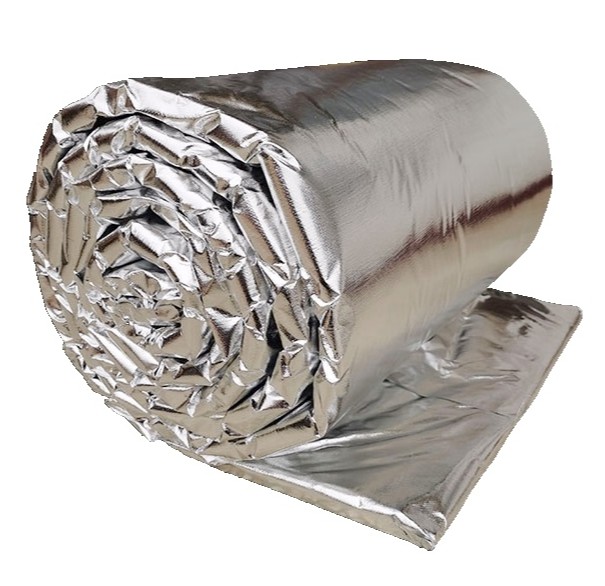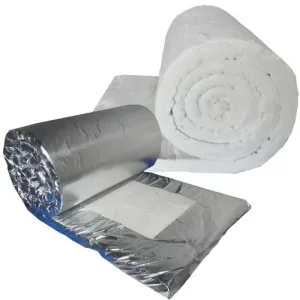Insulating Mechanism of Ceramic Fiber Aluminum Foil Blanket
Table of Contents
To ensure the safe operation of thermal equipment, reduce heat energy loss, and achieve the goals of energy conservation and cost reduction, it is necessary to apply different requirements and specifications for thermal insulation treatment of thermal equipment. Therefore, the new type of ceramic fiber aluminum foil blanket has emerged. This blanket exhibits excellent thermal insulation and radiation performance, effectively reducing heat loss. It is characterized by its lightweight, flexibility, and easy installation. Using this blanket can significantly improve the efficiency and reliability of equipment, while also reducing maintenance costs and extending the service life of the equipment.

Anchor Company‘s Ceramic Fiber Aluminum Foil Blanket

Anchor Company’s ceramic fiber aluminum foil blanket is a composite product formed by bonding Anchor Company’s ceramic fiber blanket with a layer of metal aluminum foil using a special adhesive. It features lightweight, excellent insulation, high density, corrosion resistance, good thermal shock resistance, high tensile strength, and easy construction and maintenance. It is particularly suitable for insulation and thermal protection in high-temperature thermal equipment and heating pipelines with strict requirements for insulation and energy conservation.
Insulating Mechanism of Ceramic Fiber Aluminum Foil Blanket
Generally, thermal equipment loses heat through three main methods: conduction, convection, and radiation. The aluminum foil blanket, with its unique structure, weakens these three heat dissipation pathways, reducing heat loss.
1. Reduction of Conductive Heat Dissipation
The heat from the heat source must first pass through the fiber blanket, and conductive heat dissipation can only occur along the direction of the ceramic fibers. The non-directional interweaving of ceramic fiber blanket’s fibers lengthens the heat transfer path invisibly, weakening the heat conduction. Additionally, the ceramic fiber blanket has a porosity of 93%, with 80% of fiber-to-fiber contact being point contact. Point contact and high porosity further weaken heat conduction, increasing the thermal resistance of conductive heat dissipation.

2. Reduction of Convective Heat Dissipation

The porosity of the ceramic fiber blanket is very high, and the gas is divided by the fibers into many nearly stationary small gas chambers. The pressure inside the dispersed multi-gas chamber is constant. This pressure, together with the solid fibers, forms a compact shield (forming a shielding pressure), hindering the intrusion of hot air flow and weakening heat dissipation. Additionally, due to the high density of the aluminum foil, it directly hinders gas convection.
3. Reduction of Radiative Heat Dissipation
Ceramic fibers themselves are white and smooth reflectors, exhibiting good radiation properties towards heat. Additionally, the metal aluminum foil inside the needled blanket product is in an opaque, smooth state, possessing a mirror-like reflection mechanism. The thermal radiation is reflected by the aluminum foil, significantly weakening the radiative heat transfer. Therefore, the aluminum foil blanket has a dual-layer weakening mechanism for radiative heat dissipation, with remarkable results.

Application of Aluminum Foil Blanket
Aluminum foil needle-punched blankets have a structure that provides excellent insulation and energy-saving effects. They are primarily used in industries such as petrochemicals and metallurgy for insulation linings in heating furnaces and boiler equipment, external insulation for power steam pipelines, thermal insulation layers in aerospace equipment, fire barriers in ships, interlayers in the construction industry, and insulation for everyday items.

